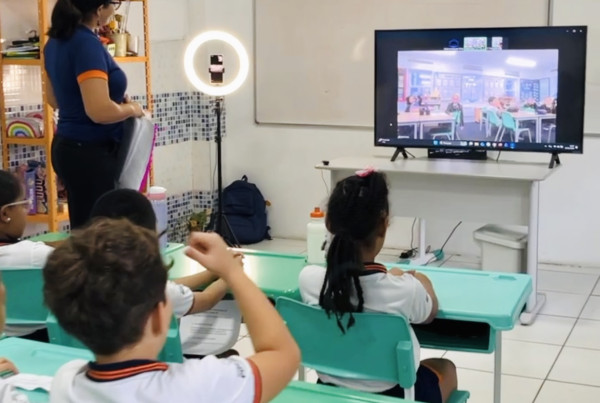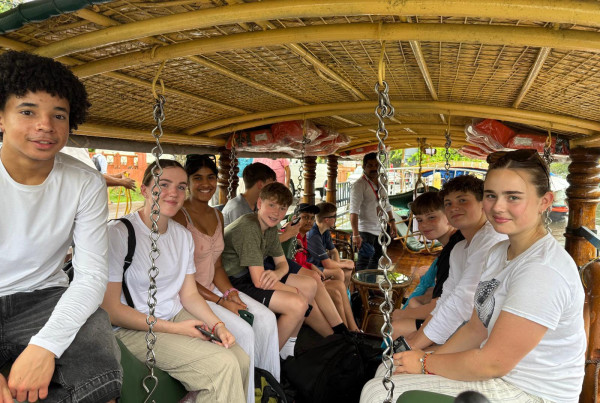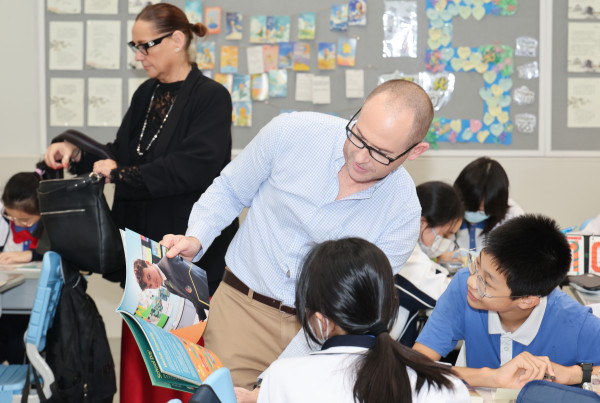The following article comes from Esmeralda Salgado, languages expert and former Head of MFL.
I am a passionate MFL teacher, and I love teaching my native language, Spanish, but most, importantly, I am an educator. I influence lives and MFL is a wonderful vehicle to instil tolerance, cultural awareness and break barriers among my students. MFL helps to educate global, tolerant citizens.
I see my job as a sport coach, say football: my lessons are the training sessions leading to the big football match. What is the big match? Real life experiences that allow students to put what they learn in lessons into practice. My job is to create these experiences! Why? Because we do not tend to remember our training/ coaching sessions, we remember the big real event, the experience: the football MATCH.
I believe that my students’ big matches are real life situations where they will be required to put their linguistic skills to the test and learn from the experience! How do I create these experiences in the educational context? How to create task, activities that are 100% memorable? Via International collaboration and exchanges!
I love exchanges! Although, not vital for the language learning journey of students, per se, they open an invaluable door to the target language culture which can be very difficult to replicate in the classroom, especially given the limited curriculum time that languages generally have in UK schools. They are the BIG MATCH.
If your school needs to find an international partner, you can try to use the services from the Global School Alliance, which will guide schools to find suitable partners and provide the resources needed to start international collaborative projects, leading to the International School Award. What a wonderful way to celebrate international work in any school, while raising awareness of languages in the wider community.
What makes a great exchange? Revamping traditional exchanges!
In my experience, the most successful exchanges were those where there was a project attached to them. Students would work collaboratively, before travelling, on a mini project, allowing them to forge friendships and start contact with their partners, thanks to digital tools, well before they met face to face. Our project would lead itself to an exchange. During the exchange, we would carry on working on our project, collaboratively, giving a purpose and rational to the whole trip and encouraging partners to work together on a common goal, now face to face, while complementing such work with local outings, excursions, and cultural visits.
You can start by setting up a simple project with your partners, but once this is well established and embedded in your school, the Turing Programme can be extremely useful to fund a more mature project and travel expenses for your school.
On the other hand, If you feel too overwhelmed with the prospect of carrying out a physical exchange, what about starting by doing it virtually, using online platforms such as Google Meet, Zoom or Teams?

That is exactly what we did at King’s Ely during lockdown, to keep our extracurricular activities going and be ambitious with our curriculum, despite the restrictions. We had solid partners in Spain and La Reunion, so, as we could not travel, we carried out a virtual exchange, linked to a project. Once we returned to school, we decided to continue with our virtual exchange before embarking on a face to face one this academic year. It was a great experience and a great way to work collaboratively throughout the academic year before we travelled to visit our partners.
10 Steps to set up a Virtual Exchange
1. Think of a common project to carry out as part of your exchange, so that you have a goal to work towards, do not set up an exchange, for the sake of it: there must be a purpose and final outcome.In our case, it was to create a virtual village where the UN Development Goals would have been tackled. Our first virtual activity focussed on creating, collaboratively, the inhabitants of this city and exploring a Circular Economy versus a Linear one as the driving force in the Village. The second virtual task, focussed on working on Human Rights and exploring how our Village will tackle these. Take this opportunity to establish cross curricular links with other departments and raise the profile of MFL in the school.
2. Create a simple but collaborative programme of activities to be carried among one or two mornings (the duration of your virtual exchange).We took the students out of lessons as they would have been for a real exchange, so they could work, in block, on the planned activities. Click here for our Spain virtual exchange programme.
3. When planning your activities, always plan some simple activities, we call them preliminary activities, to be done, independently by each school, before meeting live. These should be linked to your languages’ curriculum as much as possible.For us, a preliminary activity was to learn the concept of the development goals and create some videos where students would introduce themselves and talk about what their ideal world would be like in 30 years if such goals were to be achieved worldwide. We used a Padlet to share the videos and it was a great way to listen to real target language! We also used Padlet to exchange Xmas greetings! https://padlet.com/miguelangelmartinezcabezas/which-world-do-we-want-for-2030-qu-mundo-queremos-para-2030–f4m0kc3vee6y0jvp

Similarly, before meeting virtually, we organised a competition to decide a logo for our project: students designed different logos and voted, via Google Forms for their favourite one, the winning logo, became the logo of our whole project/exchange. This was our logo, designed by a boy in La Réunion.
4. Decide the platform you will use to carry out your virtual exchange: Google Meet/ Zoom/ Teams? and get familiar with the Breakout Rooms in those platforms, as students will need to work with their partners in small groups collaboratively.
5. To work collaboratively, use either Google or MS documents which you can share with students via a link and make them editable, so students can write on them in real time from any country.For our first virtual exchange activity, after watching a video on Circular/Linear economies, students created posters, using a PPT (We gave them a template), collaboratively.
Each international group (composed of French, English and Spanish students) worked in breakout rooms to create a poster in a shared PPT. Click here for the original PPT template, taken from Slidesmania. This is the final document with the posters finished after the activity, all done in Breakout Rooms.
6. When deciding your programme of activities, always include ice-break tasks to be carried out in small groups virtually, before embarking on the meaty ones!For that, we always suggest a little questionnaire to carry out to partners in the TL or guessing games.
7. Include at least an activity where students can show their city and local landmarks to their partners. For that, Google Earth is brilliant!For both of our Virtual exchanges’ tasks, partners showed their cities and famous local landmarks, via Google Earth, in real time, by sharing their screen within our Google Meet sessions.


8. On the days of the activities, have technical support nearby! Also, make sure all students bring headphones so that you do not get feedback from many students talking at the same time in the same room.
9. Not all activities in the virtual exchange need to be on Google Meet/Teams/Zoom, as this can be very tiring! Some activities can be carried out independently in each school off line, and then come back online for a follow-up activity.
In our second virtual exchange to La Reunion, students, in each country, created a physical tree where the leaves were the different Human Rights we had previously explored. This took two hours to create. Students then came back online and explained in the TL the rationale of their trees and disposition of the leaves.
10. Start small! The virtual activities I am sharing on this post, were part of an Erasmus project at the time, so the programme was very specific and each virtual exchange related to the next one. However, you can create a very simple standalone virtual exchange programme, as long as it has a specific purpose.
Virtual exchanges are great opportunities to carry out international collaboration and promote inclusion, as they are free so everyone can take part!

Similarly, they set up the foundations for physical travel and contribute to promoting internationalism in your school for further accreditation.





